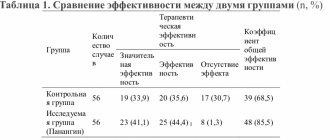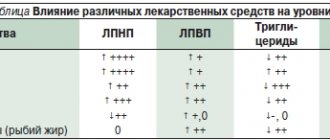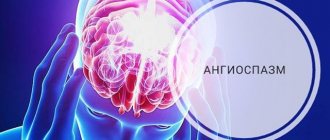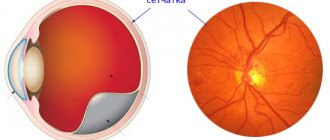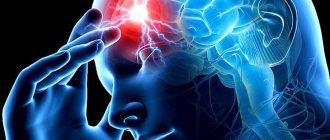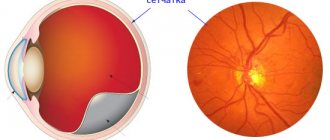Vasodilators (vasodilators)[edit | edit code]
Source:
Visual Pharmacology
.
Author
: X. Lulman.
Per. with him. Ed.
: M.: Mir, 2008
The lumen of blood vessels regulates the distribution of blood in the vascular bed. The lumen of the veins determines the blood flow to the heart, and, consequently, cardiac output and cardiac output (CMV). Peripheral vascular resistance is determined by the lumen of the arteries. The cardiac output and peripheral vascular resistance determine the value of blood pressure.
In Fig. And the most important vasodilators are presented, the order of their arrangement approximately corresponds to the frequency of use. The listed drugs have different effects on the arterial and venous beds.
Application
. Arterial vasodilators: lowering blood pressure in hypertension, reducing the strength and frequency of heart contractions in angina, reducing afterload on the heart in heart failure. Venous vasodilators: reducing preload on the heart in angina or heart failure. The practical use of individual drugs is discussed further by group of drugs.
Counterregulation when blood pressure falls due to vasodilation (B). As a result of activation of the sympathicus, the heart rate increases (reflex tachycardia) and, accordingly, the cardiac output (MV) increases. The patient complains of rapid heartbeat. Activation of the renin-angiotensin-aldosterone (RAA) system leads to an increase in blood volume (fluid retention is observed, edema is possible) and MOS.
Counter-regulatory pathways are blocked by various drugs (beta blockers, ACE inhibitors, angiotensin II antagonists, diuretics).
Mechanism of action[edit | edit code]
There are many ways to influence smooth muscle tone.
Protection against vasoconstriction
: ACE inhibitors, angiotensin receptor antagonists, α-adrenergic agonists protect against the effects of humoral mediators such as angiotensin and (nor)adrenaline. Bosentan (see below) is an endothelin receptor antagonist that can be released from the endothelium as a potent vasoconstrictor.
Replacement of vasodilators
: analogues of prostacyclin (iloprost) or prostaglandin E1 (alprostadil) act on the corresponding receptors, organic nitrates replace NO in the endothelium.
Direct effect on vascular smooth muscle cells
: Calcium antagonists, acting at the channel level, potassium channel activators (diazoxide, minok, satil) cause membrane depolarization and relaxation of smooth muscles. Phosphodiesterase inhibitors (PDE) inhibit the destruction of intracellular cAMP, which reduces vascular tone. There are many PDE isoenzymes with different localization and functions.
Erectile dysfunction.
Zildenafil, vardenafil, tardapafil are inhibitors of phosphodiesterase PDE-5 and promote erection. During sexual arousal, NO is released from the nerve endings in the corpus cavernosum of the penis, which causes the formation of cGMP in the smooth muscles of the blood vessels. cGMP is destroyed in the corpus cavernosum by the enzyme PDE-5, which is important for this tissue, which prevents erection. PDE-5 blockers “preserve” cGMP.
Pulmonary hypertension
. We are talking about a narrowing of the pulmonary vascular bed of unknown origin. The disease often progresses, overloads the right ventricle of the heart and is almost impossible to treat with vasodilators. An example of a new therapeutic agent is the endothelin antagonist bosentan. Inhalation administration of N0 is also being tested.
Why does the body need vasodilation?
As a normal physiological reaction , this is a condition that is most beneficial for the process of energy supply to the body.
- When blood vessels dilate, blood flow in the organs increases. The “productivity” of organs increases due to the consumption of oxygen and energy substances from the inflowing blood. For example, by increasing blood flow in the brain, we expect to improve the process of mental activity. This justifies the use of morning (and not only) coffee and tea.
- During inflammation, vasodilation occurs under the influence of inflammatory mediators (kinins, prostaglandins, etc.). An increase in blood flow helps eliminate the cause that caused the inflammatory reaction and restore damaged tissue structures.
Calcium antagonists[edit | edit code]
When the cell membrane of cardiomyocytes or smooth muscle cells is electrically excited, changes in ionic currents occur, including the influx of calcium. Calcium antagonists block its entry into the cell without affecting the influx of sodium or outflow of potassium. These drugs are also called calcium entry blockers or calcium channel blockers. Calcium antagonists are divided into two groups according to their therapeutic effect: those acting on the heart and those acting on the blood vessels.
I. Dihydropyridine derivatives
. Dihydropyridines, such as nifedipine, are uncharged hydrophobic substances. They relax the walls of the arteries and in a therapeutic dose have virtually no effect on the function of the heart (in an experiment on an isolated heart they have a clear effect). These drugs are called vasoselective calcium antagonists. Vasodilation and a decrease in peripheral vascular resistance lead to a decrease in blood pressure. Afterload on the heart and oxygen consumption are reduced. The development of coronary spasm is prevented.
Indication
The purpose of prescribing nifedipine is not only the prevention, but also the relief of angina attacks.
Side effects
: palpitations (reflex tachycardia due to decreased blood pressure), headaches, and swelling of the legs.
Other dihydropyridine derivatives have similar effects and differ in pharmacokinetic behavior (slower elimination) and more stable blood concentrations.
Nitrendipine, isradipine and felodipine are used to treat hypertension. Nicardipine and nisoldipine are prescribed for angina pectoris. Nimodipine prevents vasospasm after subarachnoid hemorrhage. Amlodipine contains protonated nitrogen in the side chain and therefore can be in cationic form (i.e., carry a positive charge), which explains its very long half-life (t1/2 = 40 hours).
II. Verapamil and other cationic amphiphilic calcium antagonists
. Verapamil at physiological pH has a positive charge on the nitrogen atom and is a cationic amphiphilic molecule. It has an effect not only on smooth muscles, but also on the heart. The influx of calcium causes depolarization in the sinus node of the heart (electrical excitation), in the atrioventricular node (conducting excitation from the atrium to the ventricles), as well as in cardiomyocytes (electromechanical work). Therefore, verapamil has negative chronotropic, dromotropic and inotropic effects.
Indications
. Verapamil is an antiarrhythmic agent and is indicated for supraventricular tachyarrhythmias. During atrial fibrillation and flutter, it inhibits the conduction of impulses through the AV node and weakens ventricular contractions. Verapamil is also used to prevent angina pectoris and treat hypertension.
Side effect.
Reflex tachycardia as a result of exposure to the sinus node is not observed; the heart rate does not change or there may be a tendency towards bradycardia. AV block or heart failure may develop. Patients often complain of constipation, as verapamil blocks intestinal activity.
Gallopamip (a methoxy derivative of verapamil) is very similar in structure and action to verapamil.
Diltiazem (a benzodiazepine derivative) is a cationic amphiphilic compound and has similar effects to verapamil.
VASOACTIVE DRUGS
Central antihypertensive drugs act on the adrenergic receptors of interneuron synapses of the vasomotor centers of the trunk, which reduce central sympathetic activation and thereby prevent an increase in blood pressure (BP). These include: agonists of a2-presynaptic receptors - clonidine, methyldopa, guanfacine; the central sympatholytic drug reserpine and other rauwolfia drugs (these VPs act in the same way as peripheral sympatholytics). The main indication for the use of these drugs is hypertension. Clonidine is also used for the interictal treatment of migraine, relief of hot flashes during menopause and the cardiovascular component of withdrawal syndrome. In addition, clonidine reduces hyperkinesis in generalized tics. Centrally acting drugs can cause a sedative effect (lethargy, physical inactivity, drowsiness, especially at the beginning of treatment); with prolonged use, a decrease in memory, libido and impaired ejaculation are possible. Nasal congestion and dry mouth are observed more often only at the beginning of treatment. Methyldopa, as a false precursor of dopamine, reduces its synthesis, and reserpine, as a sympatholytic, reduces its reserves, which can increase the manifestations of parkinsonism with long-term treatment. If clonidine is suddenly discontinued, especially when combined with b-blockers, a hypertensive crisis may develop. Ganglioblockers
lower blood pressure, reduce cardiac stroke volume and peripheral vascular resistance.
Cerebral blood flow remains unchanged or increases slightly because cerebrovascular resistance decreases more than total peripheral resistance. In a neurological clinic, ganglion blockers are used to control arterial hypertension in patients with cerebral hemorrhage, acute hypertensive encephalopathy, and in the event of a crisis in chronic dyscirculatory encephalopathy. For different types of vegetative-vascular dystonia (VSD), the use of “mild” (for example, ganglerone) ganglion blockers leads to equalization of the disturbed balance between sympatho- and parasympathicotonia. Some ganglion blockers (hygronium, pentamine, benzohexonium) are effective for pulmonary edema. Side effect: orthostatic hypotension is observed, therefore, when using these drugs parenterally, patients should remain in bed for 2-3 hours. Possible slowdown of intestinal motility (rarely paralytic ileus), urinary retention, mydriasis, impaired accommodation, dysarthria, dysphagia. These phenomena are reduced with the administration of proserin and carbacholine. Peripheral sympatholytics
(guanethidine, etc.) deplete narepinephrine reserves in the terminals of the neurosmooth muscle junction, moderately block sympathetic ganglia and stimulate b2 receptors of arterial smooth muscle.
Guanethidine reduces cerebral vascular tone. Due to the high risk of orthostatic complications, it is rarely used. Guanethidine is contraindicated in acute cerebrovascular accident (ACVA), myocardial infarction, pheochromocytoma. A relative contraindication to its use is chronic dyscirculatory encephalopathy (DEP). The a-receptor agonist ergotamine has a pronounced vasotonic effect on both arteries and veins with initially low tone, reducing their blood supply by 45%. Improving microcirculation is facilitated by blockade of pathological arteriovenous shunting. Ergotamine is most often used to treat patients suffering from migraine attacks. With an overdose of ergotamine (more than 8-10 mg/day), acute ergotism develops: vomiting, diarrhea, paresthesia, convulsions. With long-term use of the drug at an average therapeutic dose, chronic ergotism develops with peripheral circulatory disorders due to vasospasm. Ischemic necrosis of the soft tissues of the toes is described as a rare complication. Ergotamine is contraindicated in hypertension, atherosclerosis, angina pectoris, peripheral arterial sclerosis, liver and kidney diseases. Dihydroergotamine also has the properties of an α-adrenergic agonist, but it acts more mildly than ergotamine. a -Adrenergic blockers
inhibit the transmission of sympathetic innervation through a-adrenergic systems at different levels and block a-receptors of arterial smooth muscles.
As a result, the tone of the smooth muscles of the arteries decreases, which leads to a decrease in blood pressure, especially in the case of initial arterial hypertension. Indications: arterial hypertension and regional hypertension in the bed of organ arteries with VSD, DEP and stroke. They have a regulatory effect on energy metabolism in the brain. Side effects: dizziness, orthostatic hypotension, headache, general weakness, drowsiness, pain in the heart, frequent urination. Usually observed with an individual overdose, especially at the beginning of treatment (“first dose effect”), they disappear when the dose is reduced and the drug is discontinued. b -Adrenergic blockers
inhibit b-receptors in the central nervous system, nerve endings, smooth muscles of blood vessels and bronchi.
Non-selective b-blockers interact with b1- and b2-receptors, and cardioselective - with b1-receptors of the heart. Drugs of this group with high lipophilicity (alprenolol, metoprolol, oxprenolol, propranolol) penetrate well through the blood-brain barrier, reduce anxiety, agitation, fear, relieve cardiovascular and autonomic-somatic disorders caused by stress, reduce blood pressure, and normalize EEG parameters. b-Blockers slow the heart rate, reduce the force of myocardial contractions, reduce oxygen consumption by the myocardium, inhibit the automaticity of the atrioventricular node and ectopic foci of myocardial excitation, and increase exercise tolerance. They improve the tone and reactivity of brain vessels. These drugs provide a pronounced hypotensive effect in hyperkinetic type arterial hypertension. Indications for the use of b-adrenergic blockers in a neurological clinic are VSD, including sympathoadrenal crises, idiopathic orthostatic hypotension, migraine, DEP with arterial hypertension. When treated with drugs of this group, the mortality rate of patients with spontaneous subarachnoid hemorrhage and ischemic stroke, the frequency of relapses of ischemic stroke and mycardial infarction complicating it, are reduced. They have a sedative effect, stop hemodynamic changes that accompany psycho-emotional stress, and reduce trembling hyperkinesis caused by excitement. Effective in treating patients with withdrawal symptoms. Side effects: bradycardia, angina pectoris, impaired atrioventricular conduction to complete heart block, left ventricular failure and pulmonary edema, cardiogenic or anaphylactic shock. Non-selective drugs cause and intensify bronchospasm. When using blockers with sympathomimetic activity (oxprenolol, pindolol, alprenolol), such complications are less common. Disorders of the nervous system (insomnia, disturbing dreams, hallucinations or depression, muscle pain or fatigue) are observed in 3-15% of cases. Signs of myotonia may appear and signs of myasthenia may increase. More rare complications are fibrosis of the lungs and pleura, blepharitis, conjunctivitis, anorexia, gastralgia. Due to frequent complications, the use of practolol was discontinued. Contraindications for use: severe heart failure, bradycardia, sinus rhythm disturbances, bronchial asthma, intermittent claudication; relative contraindications: moderate heart failure, obstructive pulmonary diseases, depression, hypothyroidism, liver and kidney diseases, diabetes (non-selective b-blockers prolong the effect of insulin). If you suddenly stop taking these drugs, withdrawal syndrome is possible: deterioration of coronary blood supply, pain in the heart, arrhythmia, increased blood pressure. the properties of a- and b- blockers
.
Indications for its use are determined by a combination of these properties. The effectiveness of the drug in the treatment of hypertension-tachycardia syndrome that develops after multiple combined injuries has been established. Side effects are associated with blockade of both a-receptors - orthostatic episodes, dizziness, tinnitus, impaired urination and ejaculation (without decreased libido, erection, with preservation of orgasm), and b-receptors - broncho-obstruction, intermittent claudication, Raynaud's disease, depression with sleep disorders. Serotonin receptor antagonists
(ketanserin, ritanserin), acting primarily on the central nervous system, are used to treat diseases with vasospasm of the peripheral arteries - Raynaud's disease and intermittent claudication.
Cyproheptadine, pizotifen, and inprasochrome are prescribed for the interictal treatment of migraine. Angiotensin-converting enzyme inhibitors (ACEIs) inhibit the formation of the pressor peptide, angiotensin II. ACE inhibitors are used for all types of arterial hypertension, especially of renovascular origin, congestive cardiovascular failure, angiospastic form of Raynaud's disease, DEP with arterial hypertension or congestive heart failure. In these forms, ACE inhibitors are more effective than sympatholytics acting on sympathetic endings, a-blockers and calcium antagonists. The combination of ACE inhibitors with other antihypertensive drugs, including calcium antagonists, b-blockers and diuretics increases their pharmacotherapeutic effectiveness. Nonsteroidal anti-inflammatory drugs (NSAIDs), especially indomethacin, reduce the antihypertensive effect of ACEIs. However, it should be noted that taking acetylsalicylic acid as an antiplatelet agent (at a dose of 100-300 mg) does not affect the effectiveness of ACE inhibitors. Drugs that act primarily on
vascular smooth muscle depending on the effect on enzyme systems: adenylate cyclase (AC), phosphodiesterase (PDE) belong to different pharmacological classes.
In practice, it is these drugs with predominantly myotropic action that are often called vasoactive drugs (“antispasmodics”, “vascular” myolytics). Isoquinoline derivatives
- papaverine and drotaverine - exert their action by activating AC and inhibiting PDE in vascular smooth muscle cells and have a moderate ganglioplegic effect.
Papaverine dilates arteries and veins. The latter can worsen venous outflow from the cranial cavity, which, given the initially reduced venous tone, can be considered an unfavorable effect. Drotaverine does not reduce the tone of the veins. Derivatives of vicamine
(an alkaloid from plants of the periwinkle family) - vinpocentine.
This drug activates AC to a greater extent and moderately inhibits PDE. Vinpocetine selectively improves cerebral hemodynamics and can be considered as an “optimizer” of vascular tone, providing a selective antispastic effect on cerebral vessels, or restores vascular tone in case of its initial decrease. The drug normalizes the rheological properties of blood and improves microcirculation. Vinpocetine has a direct neurometabolic cerebroprotective effect and has an antihypoxic and antiparoxysmal effect. An important feature of vinpocetine is the lack of influence on systemic hemodynamics and the absence of “steal” syndrome. Vinpocetine is used for both initial and severe forms of cerebrovascular insufficiency, transient cerebral ischemia, all forms and stages of stroke (except for the acute phase of hemorrhagic stroke), vasovegetative disorders (including endocrine origin). as well as for the prevention of convulsive syndrome in children who have suffered a traumatic brain injury. Xanthine derivatives
- caffeine, theobramine, theophylline, aminophylline, pentoxifylline - can also be considered as “optimizers” of vascular tone, but they have a more clearly visible venotonic effect (improving the outflow of venous blood from the cranial cavity).
In addition, these drugs activate breathing, increase heart rate (HR), and diuresis. These VPs improve the rheological properties of blood. Calcium antagonists
(Ca2+ channel blockers) have the ability to have antispasmodic, antihypertensive, and coronary effects.
The group of phenylalkylamines is represented by verapamil, phendiline, and difril. The group of dihydropyridines includes nifedipine, foridone, nicardipine, nitrendipine, isradipine, nimodipine. Among these VPs, one can distinguish adalat in capsules (liquid dosage form) and tablets, which can provide a rapid antihypertensive effect, and nimodipine, which acts on the cerebral arteries to a greater extent than other Ca2+ antagonists. Peripheral vasodilators
- hydralazine, sodium nitroprusside, milsidomine, minoxidil - have a pronounced peripheral antispasmodic effect, reduce venous tone, and reduce venous return to the heart.
They are rarely used in neurological practice. The use of vasoactive drugs in the treatment of VSD
VP is used against the background of adherence to healthy lifestyle standards, treatment with tranquilizers or antidepressants. Patients with VSD with persistent manifestations of systemic hypertension and arterial hypertension are prescribed drugs that inhibit central sympathetic activation (clonidine, methyldopa, reserpine), ganglion blockers, a- and b-adrenergic blockers. To regulate regional vascular tone, myotropic antispasmodics, vinca preparations, dibazol, a-blockers, and calcium antagonists are used. For systemic hypotension and regional hypotension, ergotamine and drugs containing it, other sympathomimetics - ephedrine, fethanol, phenylephrine (Mezaton), as well as anabolic and steroid hormones are prescribed. In the case of predominant venous hypotension, drugs of the xanthine series, periwinkle, and a-stimulants are indicated. For mixed forms of VSD, combination drugs are effective - bellataminal, belloid, bellaspon. In all cases, drugs that improve metabolic processes in the central nervous system are useful: aminalon, pyriditol, piracetam, vitamin therapy (B1, B6, C, PP). Non-drug treatments include acupuncture and various methods of physiotherapy.
The use of vasoactive drugs in the treatment of DEP
DEP is a slowly progressive insufficiency of blood supply to the brain, accompanied by small focal changes in brain tissue. The main etiological factors of DEP are hypertension and atherosclerosis, systemic vascular diseases, especially those affecting the aortic arch and the great vessels of the head extending from it. In the vast majority of cases, progression of DEP occurs during episodes of cerebral circulatory decompensation. During intensive treatment of a crisis associated with increased blood pressure, the choice of antihypertensive drugs should be adequate to the severity of the crisis (preference is given to fast-acting drugs); Blood pressure should not be reduced below the patient’s usual level; it is necessary to choose a method of drug administration that provides a rapid but smooth and controlled decrease in blood pressure (usually intravenous drip infusion) and take into account the possible side effects of fast-acting drugs; minimize the risk of complications. VP is selected depending on the type of cerebral angiodystonia. For hypertonicity of the arteries, drugs with a predominant antispasmodic effect are prescribed; for symptoms of dystonia and hypotension of the cerebral arteries and veins, preference is given to vinpocetine, aminophylline, and trental. Ischemic cerebral crisis
In patients with DEP against the background of atherosclerosis, it develops as a type of cerebral circulatory failure. It may result from a decrease in the pumping function of the heart and a decrease in blood pressure, increased blood viscosity, and increased activity of the coagulation system. In these cases, adding small doses of cardiac glycosides (corglycon) to the therapy is effective. In case of crisis against the background of hypercoagulation, heparin administration is indicated. Of the indirect-acting anticoagulants, preference is given to those that exhibit a lesser tendency to accumulate: syncumar, pelentan, phenylin. With long-term (many months) prescription of VP for the treatment of DEP outside of exacerbation, effective medications are selected individually. Unfortunately, in practice this means an empirical approach (trial and error). If conditions exist, we can recommend choosing an individually optimal VP using an acute pharmacological test. It consists of sequential administration of therapeutic doses of each of the tested vasoactive agents once a day (screening). In this case, after intravenous administration of the drug, the patient’s condition is monitored and synchronous recording of blood pressure, pulse, REG, and EEG is carried out within 1 hour. Each of the other tested EPs is administered the next day. For therapy, a drug is selected that, during an acute test, caused the most favorable changes in the recorded parameters. Such studies can be carried out in a functional diagnostics room. Pharmacotherapy with means of individual choice increases the effectiveness of treatment and reduces its duration.
The use of vasoactive drugs in the treatment of stroke
It is beyond the scope of this article to describe in detail the intensive care of hemorrhagic and ischemic stroke. The use of VP as part of the combined treatment of stroke is certainly not of decisive importance. Monotherapy of VP in the acute stage of stroke cannot be considered adequate; VP must be combined with other means of pathogenetic treatment; in the acute phase of stroke, parenteral administration of VP should be considered effective; in a daily intensive care program, their repeated administration should be carried out depending on the duration of action of a single dose (for most VP, 3 times a day). In the first days after the abolition of acute stroke due to the loss or decrease in vascular reactivity, the administration of VP may not be accompanied by a change in the clinical condition or electrophysiological parameters. The absence of these signs does not indicate the ineffectiveness of the VP. The assessment of VP activity is facilitated by their administration in the intervals between the introduction of other agents of pathogenetic therapy and the dynamic observation of their effect on the patient’s condition and synchronously recorded blood pressure, heart rate, ECG, REG and EEG. When choosing the optimal drug in the first days after stroke, screening for CAP is justified; in the most acute stage, to obtain a faster effect, it is justified to administer VP into a vein in a single drip system with cardiotonic, decongestant (dehydrating), hemorheological drugs, hemodilution agents, antifibrinolytics and anticoagulants. When carrying out complex intensive therapy, simultaneous administration of drugs with opposite pharmacodynamic properties, administration of drugs with a similar pharmacodynamic effect (due to the unpredictability of the potentiating effect) or incompatible drugs (for example, heparin + Cavinton) should be avoided. Identification of the “penumbra zone” on a computer or magnetic resonance imaging scan (a perifocal area with brain perfusion at a pre-functional level) serves as the basis for continuing intensive therapy for VP and other means of combined pathogenetic treatment. Thus, the use of VP in complex stroke therapy should be considered not only justified, but also necessary. At the same time, the assessment of their action should not be limited to identifying only the vasomotor effect. Each of the drugs of this pharmacological class usually improves blood circulation and functional activity of the brain, since, although to varying degrees, EPs provide an indirect (through improved blood circulation, protection against ischemia) and direct nootropic effect due to the normalization of the metabolism of the affected brain.
Literature:
1. Mashkovsky M.D. Medicines, in 2 parts, part I - M.: Medicine, 1993 297-340, 369-370, 502-560. 2. Shtok V.N. Medicines in angioneurology. - M.: Medicine, 1984; 303 pp. 3. Shtok V.N. Pharmacotherapy in neurology. M.: Medicine, 1995; 10-28, 81-107. 4. Vidal reference book. Medicines in Russia. M.: AstraPharmServis, 1997.
How is the vasodilator effect used in medicine?
The use of the vasodilating effect of medications for therapeutic purposes has several objectives:
- Redistribution of blood volume in the body (used in “dry heart” operations).
- Reducing the speed of blood flow and the pressure exerted by blood on the walls of blood vessels (in the treatment of arterial hypertension).
- Improving nutrition and accelerating the recovery of damaged tissues (after injuries, local necrosis and systemic vascular damage due to collagenosis, atherosclerotic vascular lesions of the extremities).

